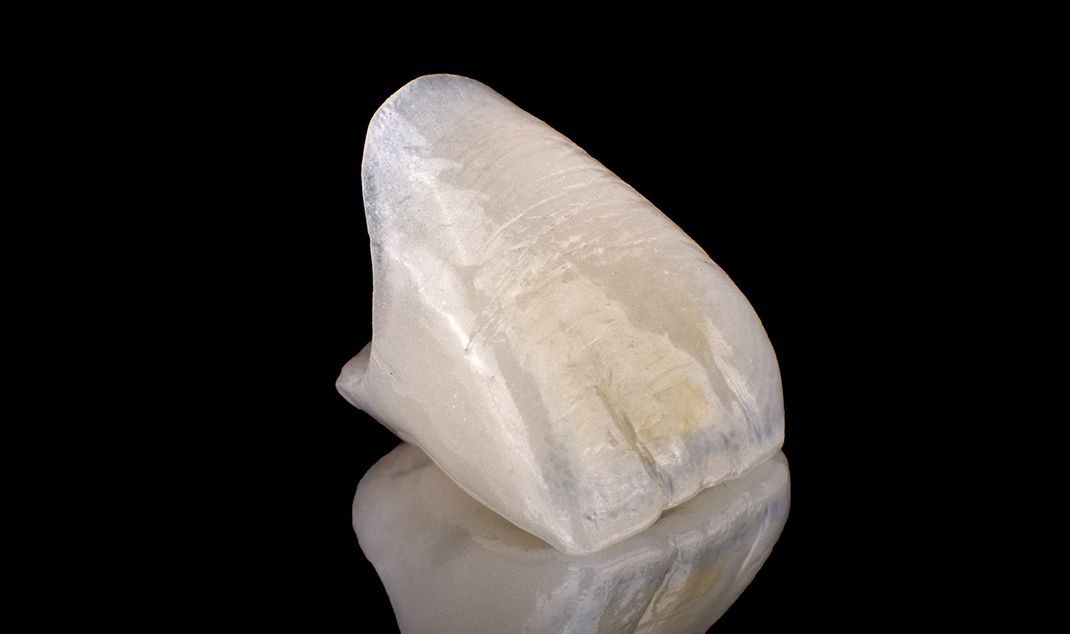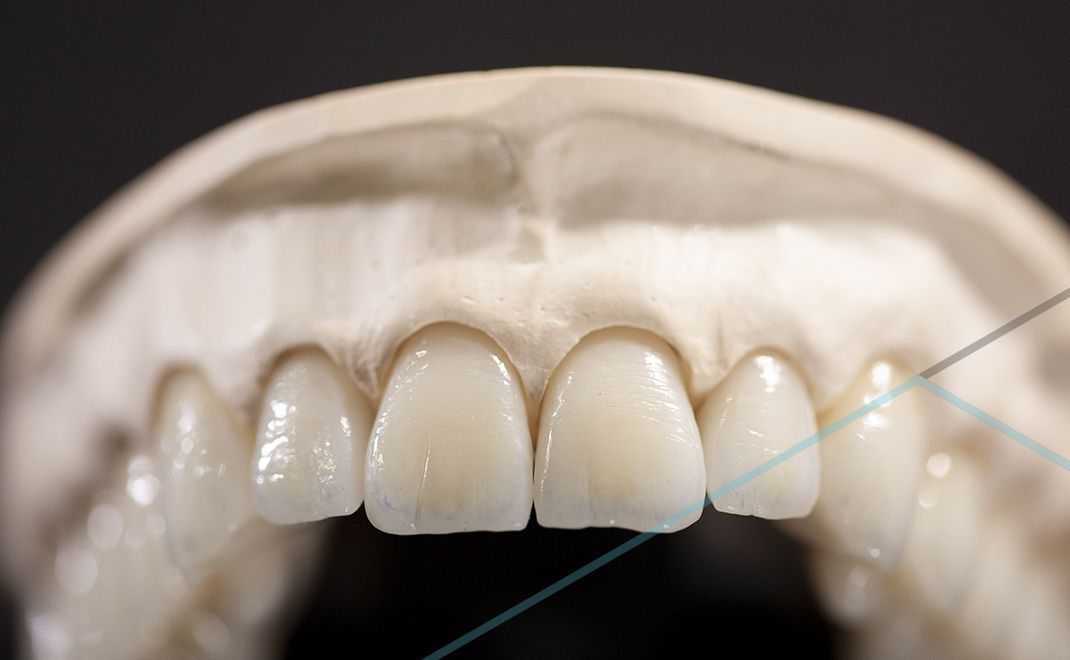G-CAM properties
- It has a similar appearance to oral tissue, ideal for areas that are more visible. The G-CAM disc has a wide chromatic range, even within the same piece.
- It has a high glass transition temperature (Tg) that prevents it from softening and distortion during use and cleaning. It is necessary to take into account that while the normal temperature of the mouth is 32-37°C, the consumption of hot drinks (that can be up to 70°C or more) as well as cleaning the prosthesis in or boiling water expose the materials to higher temperatures.
- Graphene improves the dimensional stability in polymers for dental use, which allows the dental prosthesis to maintain its shape over time. This does not only influence the thermal softening mechanisms but also the internal stress relief, the incomplete polymerisation of the material or the water absorption.
- Thanks to graphene, G-CAM improves its resistance in relation to weight. The material has a low density making the prosthesis lightweight.
- The material also has high electrical conductivity to maintain a healthy oral mucous and to react normally to hot or cold stimuli.
- A translucent material allows high transparency to imitate the natural aesthetic of the tooth, but also allows us to create opaque colours to avoid showing dead teeth or metal pins.
Chemical properties
- The G-CAM disc is chemically inert.
- It is insoluble in oral fluids.
- It does not absorb water or saliva, meaning that mechanic properties are not altered and it is completely hygienic.
- It does not allow for the phenomenon of bimetallism.

Mechanical properties
- The polymer presents a high elastic modulus. It also has a high elastic limit to ensure that the tensions generated during biting and chewing do not cause permanent deformations. The combination of these allows the prosthesis to be manufactured in smaller sections.
- Fractures in prostheses often occur due to stress mechanisms, in which the accumulation of small flexion tensions leads to, after a period of time, the formation of small cracks which spread and give way to the fracture. With graphene resin, this does not happen since it has a high deformation resistance and stress limit, thus avoiding the formation of cracks.
- The graphene also has a high impact resistance, which is useful for removable prostheses, where there is the possibility of damage or breakage if they fall onto a hard surface.
- The G-CAM disc has a high-abrasion resistance that avoids excessive erosion from cleaning or eating. The hardness numbers for acrylic resins are relatively low especially when they are compared with certain alloys used in dentistry, which makes them predisposed to abrasion from certain foods, cleaning products, etc. With the integration of graphene, the hardness is increased and erosion is avoided.
- As well as being flexible, the stomatognathic system suffers from volumetric changes over time. The flexibility of the G-CAM and its insertion with photopolymerisable materials make it the best option to ensure that your treatment is durable.
- The versatility of our products allows them to be used in the majority of dental treatments, minimising the margins of error and ensuring that the treatment is long lasting.
- The productive system that we use at Graphenano Dental ensures that the company´s products comply with all the technical and sanitary requisites that are assessed through an exhaustive quality control procedure using ultrasound (Graphenano Ultrasonic Tester).
Biological properties

- The cured material is not an irritant or toxic for the patient. The G-CAM disc has passed the cytotoxicity and genetic tests carried out at the University of Alcalá and by the Valencian Institute of Microbiology (IVAMI).
- In vitro cytotoxicity test. ISO Standard 10993-5:2009.
- Reversion of Bacterial Mutations Test. ISO Standard 10993- 3:2014 and OECD 471:1997.
- Antiallergic.
- Bacteriostatic. Graphene does not allow the growth of bacteria or mould.

